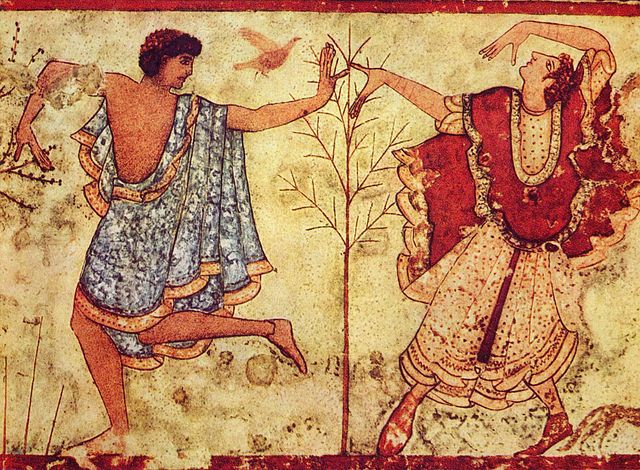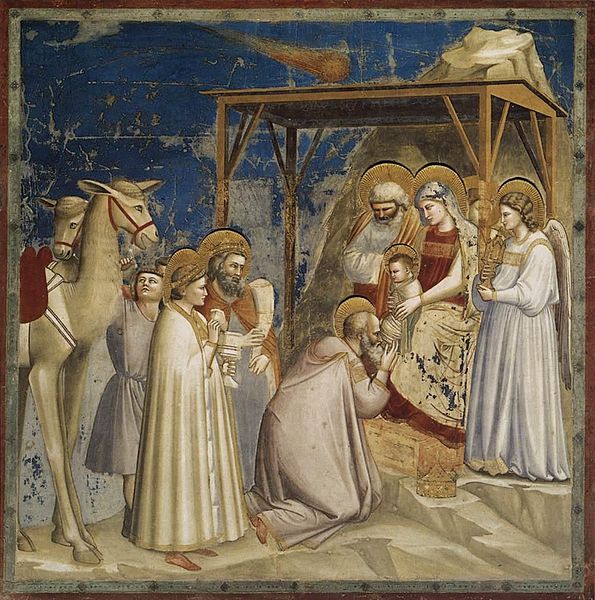The Sistine Chapel ceiling, painted in fresco by Michelangelo between 1508 and 1512, is a cornerstone work of High Renaissance art.
The interior of the Sistine Chapel showing the ceiling in relation to the other frescoes. Michelangelo's The Creation of Adam is near the top of the photo.
The ceiling as it may have looked before Michelangelo painted it
Hypothetical reconstruction of the first project for the tomb of Julius II (1505) according to an interpretation by Adriano Marinazzo (2018)
Comparison between Michelangelo's sketch of the Sistine ceiling's architectural outline (Archivio Buonarroti, XIII, 175v) and a view from below of the Chapel ceiling. Comparison by Adriano Marinazzo (2013).
Fresco is a technique of mural painting executed upon freshly laid ("wet") lime plaster. Water is used as the vehicle for the dry-powder pigment to merge with the plaster, and with the setting of the plaster, the painting becomes an integral part of the wall. The word fresco is derived from the Italian adjective fresco meaning "fresh", and may thus be contrasted with fresco-secco or secco mural painting techniques, which are applied to dried plaster, to supplement painting in fresco. The fresco technique has been employed since antiquity and is closely associated with Italian Renaissance painting.
The Creation of Adam, a detail of the fresco Sistine Chapel ceiling by Michelangelo
Etruscan fresco. Detail of two dancers from the Tomb of the Triclinium in the Necropolis of Monterozzi 470 BC, Tarquinia, Lazio, Italy
A Roman fresco of a young man from the Villa di Arianna, Stabiae, 1st century AD.
Fresco by Giotto, Scrovegni Chapel in Padua. Sky and blue mantle of Maria were painted a secco, and large part of the painting is now lost








